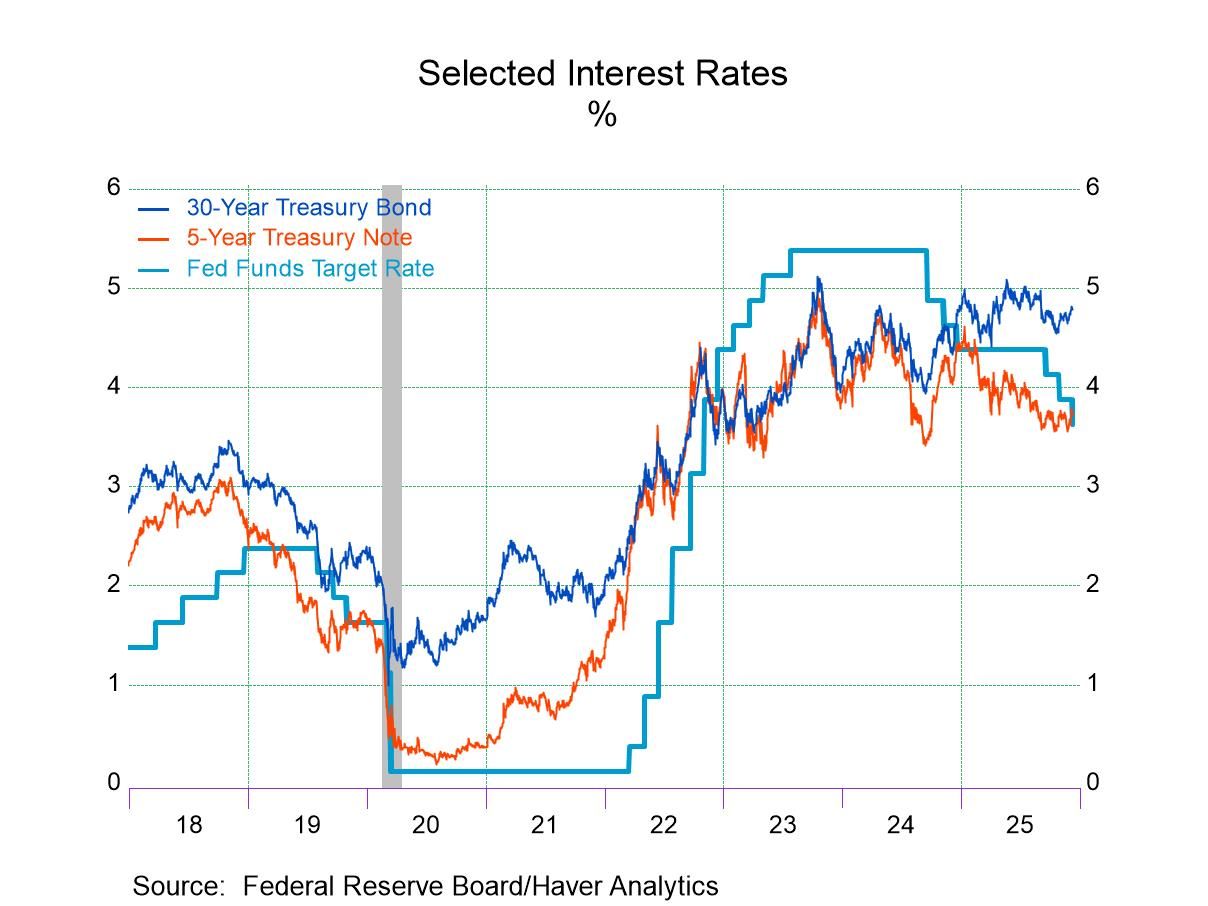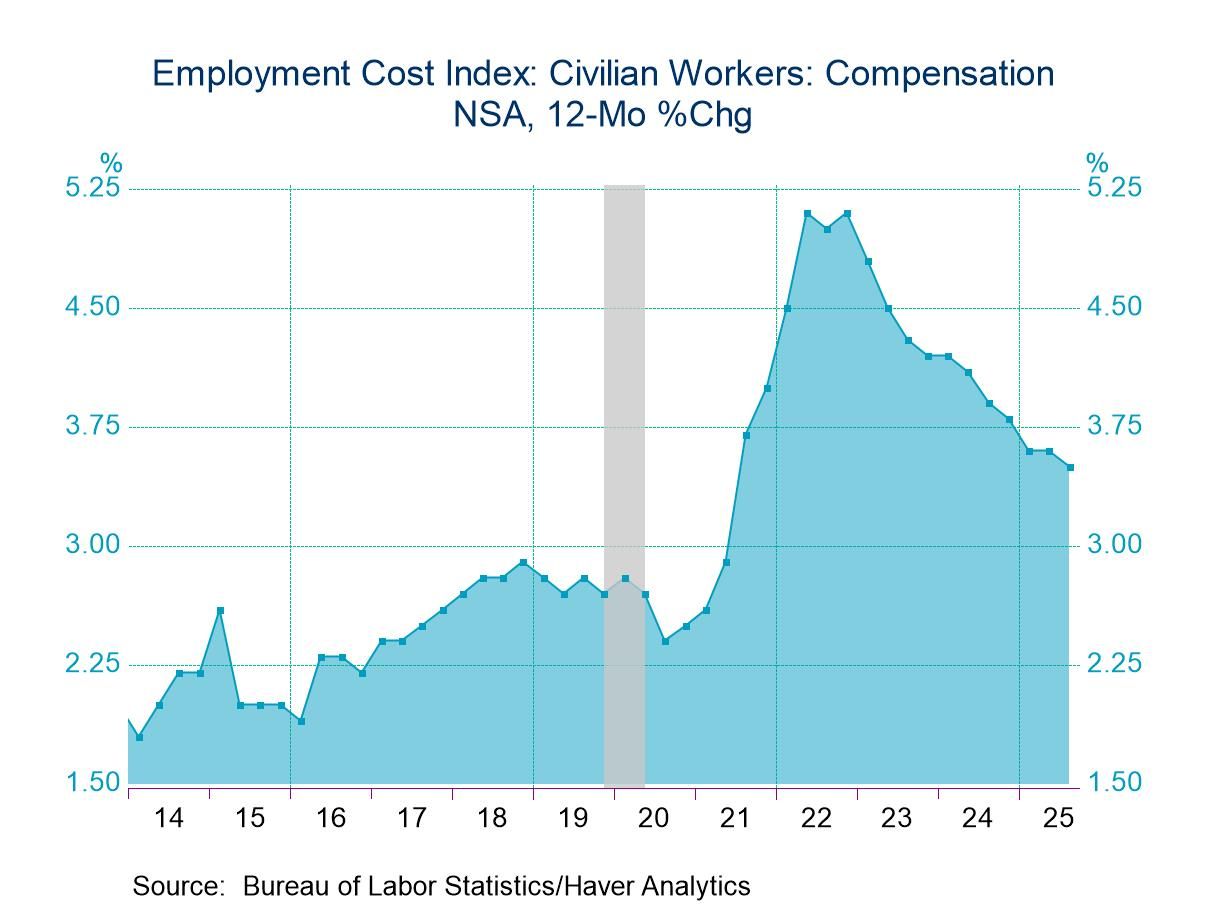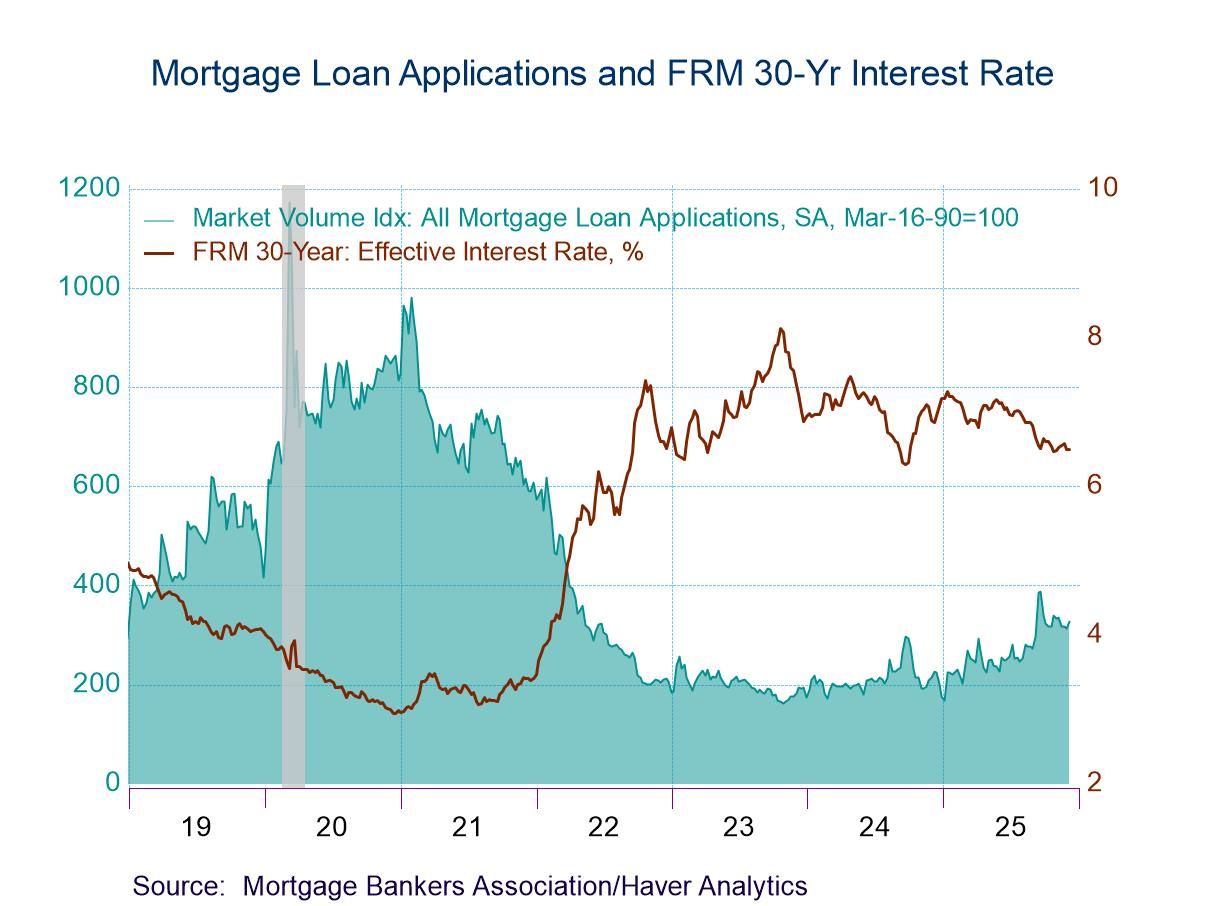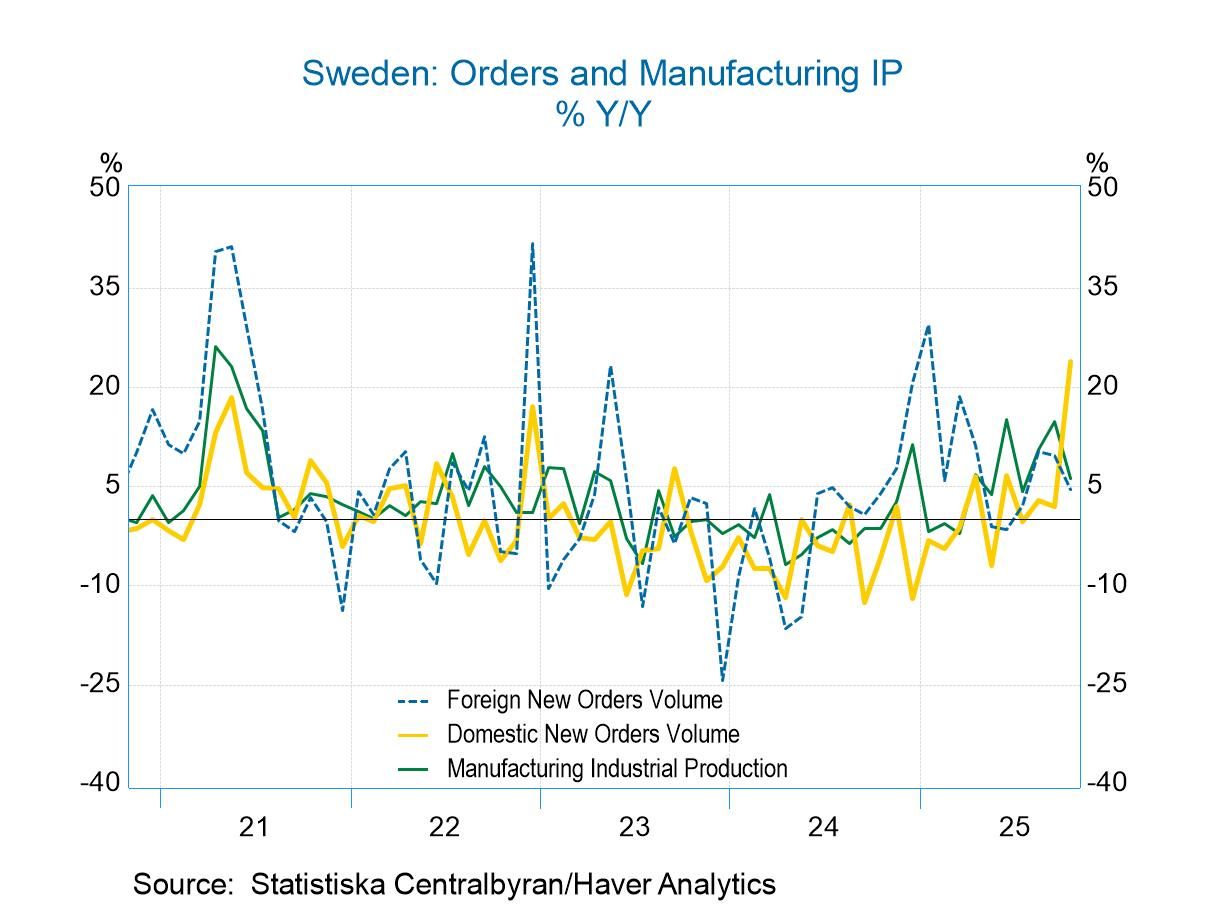 Global| Apr 07 2005
Global| Apr 07 2005Uneven Performance in Industrial Production for UK, Malaysia and Others in February
Summary
Four diverse countries reported February industrial production data today, UK, Germany, Hungary and Malaysia. While three saw a decrease in February, output is generally rising, albeit fitfully. Malaysia has the strongest gains of [...]
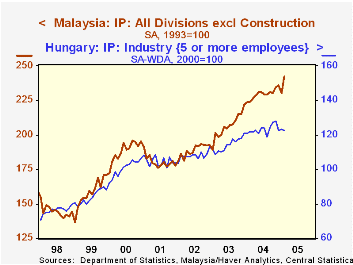
Four diverse countries reported February industrial production data today, UK, Germany, Hungary and Malaysia. While three saw a decrease in February, output is generally rising, albeit fitfully.
Malaysia has the strongest gains of these nations, with February up 5.2% from the previous month and 8.5% from a year ago after an overall advance of 11.3% in 2004. Rubber, food and chemicals show the most distinct uptrends. Malaysia is included in Haver's EMERGEPR database. Hungarian data are in the EMERGECW database. Output in Hungary was strong in 2004 also, with growth of 8.4%, but has slowed noticeably in recent months. A decline of 0.3% in February put it just 1.3% ahead of the year-earlier month. The recent weakness is evident in the mining sector, although wood, paper and machinery industries continue to show gains.
The larger industrial countries are no more than mixed. Output in the UK and Germany fell in February by 0.4% and 1.4%, respectively, with German production up 1.9% from a year ago, but the UK off 1.4%. The UK's energy sector has been weakening steadily since 2000 and this is restraining overall growth. Machinery and appliances, however, continue to increase. In Germany, the energy refining and production sector, by contrast, is providing some growth, along with chemicals, paper and electrical equipment.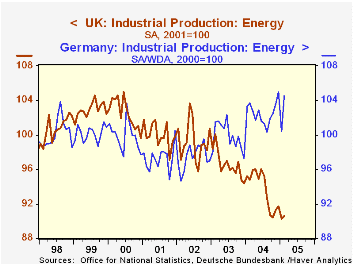
Each Germany and the UK has its own Haver database, and a summary of the production data is also included in G10. This latter database, compiled by Haver directly from its country sources, is arranged by country and also by concept, so production among individual countries can be easily compared. A database from Eurostat, the EU's data coordinator, also contains summary production data, as do a number of other international organization and privately generated databases among Haver's collections.
| Percent Changes Monthly, seasonally adjusted |
Feb 2005 | Jan 2005 | Year Ago | 2004 | 2003 | 2002 |
|---|---|---|---|---|---|---|
| UK | -0.4 | -0.3 | -1.4 | 0.5 | -0.1 | -2.5 |
| Germany | -1.4 | 2.8 | 1.9 | 4.2 | 0.4 | -1.1 |
| Hungary | -0.3 | 0.3 | 1.3 | 8.4 | 6.6 | 3.3 |
| Malaysia | 5.2 | -2.3 | 8.5 | 11.3 | 9.3 | 4.6 |
| Memo: US | 0.3 | 0.1 | 3.3 | 4.1 | -0.0 | -0.3 |
Carol Stone, CBE
AuthorMore in Author Profile »Carol Stone, CBE came to Haver Analytics in 2003 following more than 35 years as a financial market economist at major Wall Street financial institutions, most especially Merrill Lynch and Nomura Securities. She had broad experience in analysis and forecasting of flow-of-funds accounts, the federal budget and Federal Reserve operations. At Nomura Securities, among other duties, she developed various indicator forecasting tools and edited a daily global publication produced in London and New York for readers in Tokyo. At Haver Analytics, Carol was a member of the Research Department, aiding database managers with research and documentation efforts, as well as posting commentary on select economic reports. In addition, she conducted Ways-of-the-World, a blog on economic issues for an Episcopal-Church-affiliated website, The Geranium Farm. During her career, Carol served as an officer of the Money Marketeers and the Downtown Economists Club. She had a PhD from NYU's Stern School of Business. She lived in Brooklyn, New York, and had a weekend home on Long Island.


